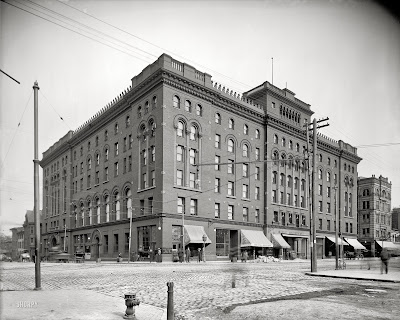 PROJECT OUTLINE
PROJECT OUTLINE"Behind the Iron Curtain" is an adventure/action Third person perspective with elements of a Role play game for PC. The whole action of this game takes place in estern europe in the cold war period. The soviet union has forced strickt laws in all of its satelite republics. Comunism and repressions against occupied nations has reached its peak. After Brezhnev's strong politics against the allied countries, Americans and other european countries have reinforced the Iron courtain with a large concrete wall with patrols and armed guards each 100 km going from the north of germany and down to slovenia and cut of any supplies and trade routes.
It is year 1980 riots are emerging all over Poland against the Socialists. Brezhnev have forced repressions against the society and mostly on the working class. Most of the communication with the outside world is down. The soviet propaganda and militia is everywhere keeping the piece and enforcing strickt laws on the nation. Riots are emerging but they are quickly dealt with. Protests from the allied countries are comming in each day.
Action of the game takes place in Poland's port city called Szczecin. It's shipyard was the biggest and most prospering in the estern ourope. It was also the only connector between polish socialistic republik and the rest of the europe. The main charracter has been working there for years untill the soviets closed it down to prevent any contraband or escape. Soviets have remade it to an outpost. Our Hero is on of the oposition/resistance leader which is trying to escape the regime.
AIMS & OBJECTIVESThe main aim of this project is to give a better understanding how a repressed and under a regime country looked alike. Main focus will be on the realistic next gen environments representing the industrial side of the "PRL" Polish socialistic republic in the days of the regime. It will be a bit of a historic spinn off that will represent the whole soviet regime in a cruel and brutal way aswell as presenting the society in a dystopian way.
This will involve alot of archive search in the Institute of the national remembrance. I would also like to refe to the films like "1984", and "The mutant chronicles" - but just the opening 5 min of the film which had good art directory moments ... (the rest of the movie was crap). Simmilar art directory should be applied to this project.
The whole atmosphere in the game would have to convince the player that he is in a militarized and repressed country. I will achieve that by a mix of a special art style and the propaganda sttyle. There will be alot of concepting involved. From Designing outfits of the main character, militia soviet police to environments and stuff like propaganda posters and adverts. I will have to carefully choose my colour palette for the entire project to fit the age period and time it is set in. There will be also alot of prop and vehicle work involved.
AUDIENCEThis game will be directed to the mature audience becouse of its language and brutality. I would like to mainly show here the ruthlessness of the militia. It will definetively have a Pegi 18 stamp.
TECHNOLOGY AND SOFTWAREThis game will be a next gen game. Software that would be needed to create it:
3DS max 2011 - Modelling, UV mapping, texturing, normal map baking, high polygon modeling (Props, weapons and vehicles)
Zbrush 4.0 - Environment and character sculpting for baking down to the low poly
Unreal Development Kit - Environment building, Lightning, setting up the mood of the scenery, special effects, bringing the whole environment to life.
xNormal - normal map baking
Photoshop CS4 - Texture creation and concepting.
TECHNICAL SPECIFICATION:MAIN ENVIRONMENTSHIPYARD - 150.000 Tris
this includes a couple of hero assets and props related strongly to the history period and the shipyard itself.
Textures: 2 x 4096x4096 - 1 for the environment (tiling textures) and 1 for the Hero assets which can be devided into 4x2048 or 16x1024. Dependant on the ammount of them.
... that includes Diffuse, Normal, Specular, Emissive (if needed), Displacement maps for environments.
VEHICLES:Soviet riot APC - BTR-100 - 10.000 Tris Textures 2 x 1024x1024
Junak Motorcycle - 6000 Tris 1 x 1024x1024
... that includes Diffuse, Normal, Specular, Emmisive.
CHARACTERS:Main Character - 15.000 Tris 2 x 2048x2048
Soviet militia - 10.000 Tris 2 x 2048x2048
Workers/Civilians - 6000 Tris 2x 1024x1024
... that includes Diffuse, Normal, Specular, Emmisive.
REFERENCE:-I would use the Szczecin's shipyard as a base reference for my environment. It has been closed for 2 years now. It is one of those places back home that reminds strongly about the industrial comunism period. Every item and sign there is filled with that age. Through the years it hasn't been renovated so the state of it in a architectural way stayed the same through years. Only bit that adds to its creepynes are the old rusty ships and leftover equipement that has a strong "pripyat" feeling about it. It is not as abbandoned as that ukrainian city tho.
-"PRL" Archives like chronicles would be highly recomended.
Well this was quite fun writing this. Tho for an FMP project this would be abit too much for 1 person to handle so I would only think about doing the environment from which I would have alot of satisfaction by doing it. A piece of my home city done digitaly, brilliant.



























